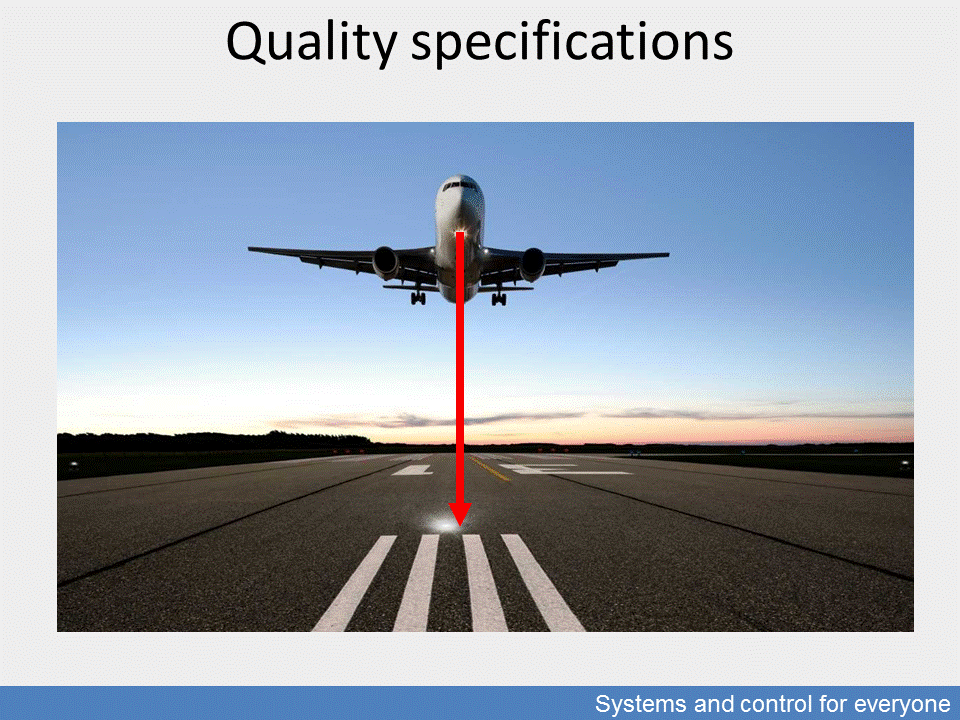

Quality specifications
In addition to the primary requirement of stability, there are several quality requirements that must be met as well. These include accuracy (see picture), operating costs, the vehicle’s fuel consumption, the velocity of closed-loop control (e.g. overtaking safety) or the environmental quality of the operation (emission of harmful substances).
In a closed-loop control it is a key requirement that in a steady state the controlled quantity must reach the preset steady value within the preset range of accuracy.
This means that in a steady state the controlled quantity must follow the reference signal, and the closed-loop control must eliminate the effect of input and output disturbances within the given range of accuracy.
Quality requirements include adaptivity, i.e. the system’s ability to adapt to changing conditions.
Compliance with these quality requirements requires the design of closed-loop controls which modify the measured and estimated state variables toward the preset values, while sustaining the stability of the whole system. A good example here is the design of vehicles (in particular aircrafts) where compromises have to be reached while satisfying the primary requirement of stability. To this end, calculations are performed by parametrisation (e.g. Youla parametrisation).